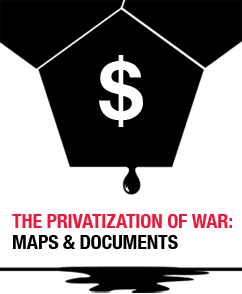ECONOMY - Edinburgh
In the 21st century the economy has come to provide the ground zero of our sense of self. But what does this experience of a life dominated by economic relations feel or even look like?
Two parallel exhibitions make the core of a curatorial project which examines why, and how, art since the 1990s has revealed the economy to be the axis of contemporary existence. Presented at Stills in Edinburgh and the Centre for Contemporary Arts (CCA) in Glasgow, ECONOMY features works by over 40 international artists including new commissions by the Austrian collective WochenKlausur and Scottish photographer Owen Logan. A reflective follow-up to the curatorial project, the volume ECONOMY: Art and the Subject after Postmodernism is forthcoming from Liverpool University Press.
Exhibitions David Aronowitsch & Hanna Heilborn | Ursula Biemann | Pauline Boudry & Renate Lorenz | Tracey Emin | Andrea Fraser | Claire Fontaine | Melanie Gilligan | Johan Grimonprez | Andreas Gursky | Kai Kaljo | Owen Logan | Rick Lowe | Jenny Marketou | Dani Marti | Angela Melitopoulos | Marge Monko | Tanja Ostojić | Anu Pennanen | Stéphane Querrec | Raqs Media Collective | Martha Rosler | Hito Steyerl | Mitra Tabrizian | WochenKlausur | Paolo Woods
Film Lounge Dario Azzellini & Oliver Ressler | Jeremy Deller & Mike Figgis | Marcelo Expósito & Nuria Vila | Yevginy Fiks, Olga Kopenkina & Sasha Lerman | Christos Georgiou | Michael Glawogger | Francesco Jodice | Ernest Larsen & Sherry Millner | Jesper Nordahl | Maria Ruido | Yorgos Zois
The end of the Cold War, represented by the fall of the Berlin Wall, generated a number of 'turns' in the context of contemporary art: turns to collectivism, to activism, to archives, to social bonds, relations and communities, to labour, to biopolitics and the document, to struggle. This restless quest for the right 'tag' has been one way of saying that contemporary art is, finally, becoming new. Navigating art's current shift to materialist aesthetics, the ECONOMY exhibitions and film programme showcase strategies deployed over the past two decades to chart capitalism's most advanced frontier: ourselves. The artworks presented—and often re-interpreted—illuminate the diverse ways in which our lives and sense of self are shaped by and through capital's internalised rule, from our childhood experiences to the way we labour, play and make love or war.
Guided by a set of seven keywords (work, sex, life, enclosures, crisis, spectres, exodus) widely used in recent analyses of capitalism and potential alternatives, ECONOMY draws together a small selection of the many artists whose work attends to capitalism's far-reaching transformation in its global moment. Paolo Woods' photographs of Africa's takeover by Chinese businessmen are set against Martha Rosler's documentation of airport design as soul narcotic; and Raqs Media Collective's investigation of happiness is a critique of capitalist subjectivities as much as Pauline Boudry and Renate Lorenz's queer articulation of labour and desire. Presented for the first time in Britain, Tanja Ostojić's devastating portrayal of the post-socialist migrant's sexualisation meets Melanie Gilligan's capital as pure Spirit and the relentless intensity of Anu Pennanen's depiction of a Parisian shopping mall. Tracey Emin's self-portrait with money complements Mitra Tabrizian's City bankers of year 2008 as guilty or not and Andrea Fraser's anatomy of art-world production values. Jenny Marketou's children-art collectors share the planet's future with David Aronowitsch and Hanna Heilborn's children-slaves—a planet which Ursula Biemann and Johan Grimonprez find in poor environmental shape. These are just some of the ways in which ECONOMY artists have registered multiplying social divisions as capital has been claiming the earth. In doing so, they give us also reasons to think about the paradigm of art after postmodernism—one where proliferating forms of economic otherness have replaced postmodernism's iteration of cultural difference.
The independent ECONOMY website is an integral part of the project. As well as offering further information about the accompanying programme of screenings, public forums, talks and performances, the Public Forum section facilitates collective investigations into how we interpret our relationship with capitalism and the possibility of alternatives. Users can upload photographs to the Image Archive, exchange views on themes raised in the debate section and consult the material in the Reading Room. To see, hear and speak out, visit www.economyexhibition.net.
ECONOMY is a collaboration between Stills, CCA and the University of Edinburgh.
Curated by Angela Dimitrakaki and Kirsten Lloyd: curators@economyexhibition.net
Stills
Saturday 19 January–Sunday 21 April 2013
23 Cockburn Street
Edinburgh EH1 1BP
Hours: Monday–Sunday, 11–6pm. Free.
www.stills.org
CCA Glasgow
Saturday 26 January–Sunday 23 March 2013
350 Sauchiehall Street
Glasgow G2 3JD
Hours: Tuesday–Saturday, 11–6pm. Free.
www.cca-glasgow.com
ECONOMY is generously supported by The Association of Art Historians | The Barry Amiel and Norman Melburn Trust | Creative Scotland | Institut für Auslandsbeziehungen e. V. | Austrian Cultural Forum London | Goethe Institut Glasgow | Finnish Institute in London | Arts Council of Finland | Inigo | City of Edinburgh Council | Glasgow Life | The Nancie Massey Chartable Trust | Scottish Contemporary Art Network.























